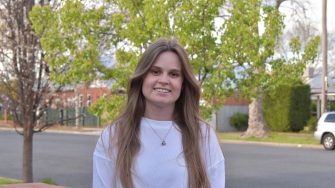Q&A with 5th year biomedical and mechanical engineering student, Emily Mills
Growing up in Wagga Wagga, Emily’s interest in engineering was first sparked by a love of maths, physics and creating things. Receiving a rural engineering scholarship took her to UNSW Sydney where she's been making a significant impact in the women in the engineering community.

